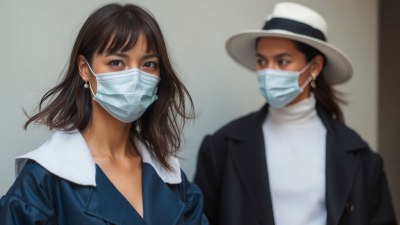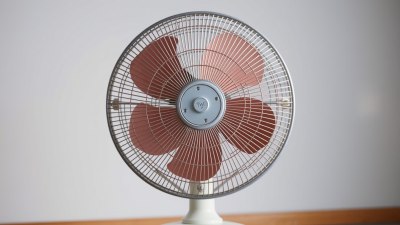How Trees Shape Their Own Rainfall Patterns Around Them
Explore the fascinating relationship between trees and their ability to influence local rainfall patterns.

Trees play a pivotal role in ecosystems, not just as towering giants providing shade and oxygen, but also in influencing local weather patterns. Remarkably, trees can shape their own rainfall patterns, creating microclimates that benefit both them and other organisms in their vicinity. This phenomenon highlights the intricate relationship between flora and atmospheric conditions. In this article, we will delve into how trees impact rainfall, the mechanisms behind this influence, and the broader implications for the environment.
The Basics of Tree Physiology
To understand how trees shape rainfall, we must first examine how they function physiologically. Trees absorb water through their roots from the soil, which is then transported through the trunk and into the leaves via a process known as transpiration. This process is crucial, as it leads to the release of water vapor into the atmosphere. The transpired water vapor helps raise humidity levels around the tree, which can enhance cloud formation and subsequently influence local rainfall patterns.
Transpiration: The Key Mechanism
Transpiration is the leading mechanism by which trees can influence rainfall. When a tree transpires, water vapor is released into the air, which increases local humidity. This increase in humidity can create an environment more conducive to cloud formation. In regions with dense forests, the collective transpiration from countless trees can significantly raise humidity levels. This, in turn, can lead to the formation of clouds and subsequently result in increased precipitation. For instance, forests in tropical regions are known to generate their own rain through this process, often leading to the term 'forest rain'.
Microclimates Created by Trees
Trees not only influence rainfall but can also create localized microclimates. A microclimate is a small area with a different climate compared to the surrounding areas. Trees can create cooler and more humid conditions due to the shading they provide and the moisture they release. This microclimate is critically important for both the trees themselves and the wildlife that depends on them. Additionally, the presence of trees can also decrease wind speed, further stabilizing temperature and humidity levels.
The Interplay Between Trees, Soil, and Rainfall
The relationship between trees, soil, and rainfall is complex and multifaceted. Trees play an essential role in maintaining soil moisture levels by reducing evaporation. The presence of tree roots helps structure the soil, improving its ability to retain water. When trees are part of an ecosystem, they help ensure that moisture is not lost quickly to evaporation, allowing for a more consistent supply of water to the surrounding flora and fauna. This interaction emphasizes how trees can directly affect the water cycle in their environment.
Forest Density and Rainfall Generation
The density of trees in a particular area can significantly influence local rainfall patterns. Denser forests tend to produce more rainfall than less dense areas due to the cumulative effect of transpiration. In areas where trees are sparse, there may not be sufficient moisture released into the atmosphere to generate significant rainfall. Conversely, forests that are dense can lead to precipitation that supports the vegetation and wildlife reliant on the water. Studies have shown that regions with extensive tree coverage often see higher levels of rainfall, reinforcing the idea that trees can play a fundamental role in weather systems.
The Impact of Deforestation
Deforestation poses a substantial threat not only to biodiversity but also to local weather patterns. When trees are removed, the immediate effects include a decrease in transpiration, which can lead to reduced humidity levels and subsequently lower rainfall. This can create a feedback loop where decreased rainfall leads to further drought, which in turn can hinder tree regrowth. Over time, the landscape can shift from forest to drier ecosystems, drastically altering the local climate and affecting all forms of life.
Local Climate and Tree Species
Differently adapted tree species can influence microclimates in unique ways. For example, some tree species may have higher rates of transpiration than others, thereby creating more humid conditions. Additionally, trees with larger canopies can provide more shade, further altering the temperature and humidity around them. The variation in species can lead to a diverse array of climate patterns within a small geographical area, highlighting the importance of maintaining a diversity of tree species for climate stability.
Case Studies: Trees and Rainfall
Numerous studies have demonstrated the impact of trees on rainfall. In the Amazon rainforest, for instance, it has been observed that the trees release significant amounts of water vapor that result in substantial precipitation. This local rainfall not only supports the rainforest ecosystem but has ripple effects on the wider climate. Similarly, in temperate regions, such as the Eastern United States, research has shown that urban forests can contribute to increased rainfall, bringing benefits to urban areas that might otherwise experience drought.
The Role of Trees in Climate Change Mitigation
Trees are vital in the context of climate change, as they sequester carbon dioxide—one of the primary greenhouse gases contributing to global warming. Through their ability to influence rain patterns and maintain local climates, trees assist in regulating temperatures and weather patterns. Therefore, protecting existing forests and planting new trees could prove instrumental in combating the adverse effects of climate change. This relationship underscores the importance of trees beyond their immediate environment, as they have broader implications for global meteorology.
Urban Forestry and Rainfall
Urban areas face unique challenges with respect to rainfall and climate. The presence of trees in cities can help mitigate urban heat island effects, improve air quality, and enhance rainfall patterns. Urban forestry initiatives aiming to increase tree planting in cities can lead to improved rainfall dynamics, reducing the impact of stormwater runoff and promoting a healthier urban environment. By increasing the green infrastructure, urban areas can improve their resilience to flooding and drought.
The Indispensable Role of Trees
The ability of trees to shape their own rainfall patterns is a testament to their role as foundational components of ecosystems. By influencing local humidity and fostering cloud formation, trees not only support their own growth but also create environments conducive to biodiversity. Protecting trees and forests be they natural or urban—should be a priority for sustaining local climates, biodiversity, and the health of our planet. As the challenges of climate change continue to escalate, understanding the intricate relationship between trees and rainfall becomes ever more crucial.











